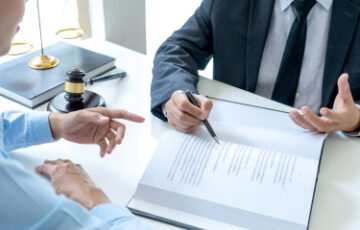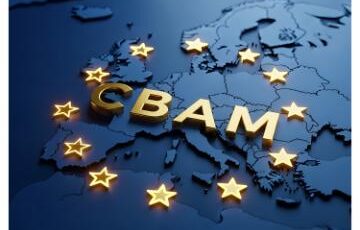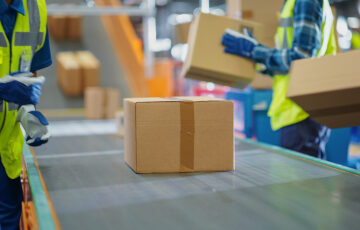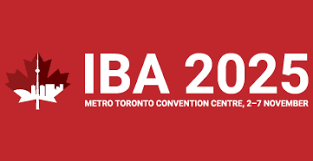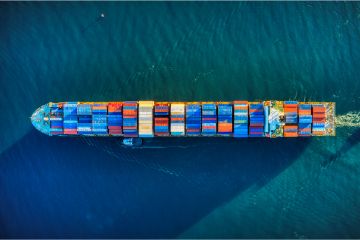
Manufacturers must immediately warn consumers of the danger, halt sales, withdraw the product from the market, and offer at least two remedies such as repair, replacement, or refund. Additionally, they bear the legal obligation to report the unsafe product directly to the NVWA through the European Commission’s Business Gateway.
The Dutch Food and Consumer Product Safety Authority registered an average of 18 enforcement actions per day for product safety incidents in 2021. These figures underscore the importance of proactive action by manufacturers when product safety risks arise. A product recall represents a complex legal process for Dutch entrepreneurs with far-reaching consequences for reputation, liability, and business continuity.
The legal basis for recalls is anchored in Article 21b of the Commodities Act and the General Product Safety Regulation. Manufacturers bear primary responsibility for product safety from the design stage through the aftersales phase. This responsibility persists throughout the entire lifecycle of the product.
How does the obligation for a product recall arise under Dutch law?
The obligation to recall arises by operation of law as soon as a manufacturer knows or reasonably should know that their product poses a danger to consumers. The NVWA does not need to issue a formal decision to impose a recall. However, the supervisory authority can take enforcement action through an order subject to penalty or administrative enforcement if the manufacturer refuses or fails to act.
A product qualifies as unsafe when it is harmful to health or unfit for human consumption. This assessment follows three elements from the legislation:
- Normal conditions of use by the consumer
- Information provided on labeling and packaging
- Generally available consumer information about health risks
To determine whether a product is harmful, supervisors examine short-term and long-term effects, potential consequences for offspring, cumulative toxic effects, and special physical sensitivities of specific consumer groups such as allergy patients.
What immediate actions must a manufacturer take in the Netherlands?
Once a manufacturer identifies a safety risk, they must immediately implement three core measures. Therefore, speed forms a crucial success factor in limiting potential damage.
First, the manufacturer must directly implement a sales and distribution halt. All trading partners in the chain receive instructions to immediately remove the product from shelves. For online sales, the item is removed from websites. This measure prevents additional consumers from purchasing the dangerous product.
Second, the legal reporting obligation to the NVWA via the online Business Gateway follows. This notification contains product identification, risk analysis, distribution data, received complaints, and measures already taken. Failure to report constitutes a violation that can result in fines up to 1% of annual turnover for intentional violations, with a maximum of €900,000.
Third, the manufacturer must inform all links in the distribution chain. Wholesalers, retailers, webshops, and fulfillment centers receive clear communication about the recall action. These parties must subsequently return their inventory to the manufacturer for safe storage or destruction.
What are the requirements for consumer communication under Dutch law?
Communication directed at consumers meets strict legal requirements. At the top of each recall notice, the title “Important Safety Warning” or “Recall Action Related to Product Safety” appears prominently. This standardization ensures recognition by consumers.
The recall notice must contain these elements:
- Clear image of the affected product
- Company name as sender
- Product identification (brand, type, EAN code, batch or serial number)
- Information about sales locations and period
- Concrete description of the defect and the risk
- Instructions on what consumers should do
- Offered solutions for consumers
- Dutch-language contact information for questions
Manufacturers distribute this warning through multiple channels. Beyond publication on their own website and social media, the NVWA posts the message on its official safety warning page. Additionally, press releases, newspaper advertisements, and posters in stores can increase reach.
Does the manufacturer have direct contact details of customers? They must prioritize contacting them via personal emails or letters. Loyalty programs and product registration systems provide valuable data for this purpose, provided consumers gave permission for safety communications.
The NVWA subsequently shares recall actions via the European Safety Gate (RAPEX system), thereby informing other member states. Consequently, a notification in the Netherlands can have international consequences for product distribution.
What solutions must a manufacturer offer consumers in Dutch law?
Dutch legislation requires manufacturers to offer consumers at least two of these three options: free repair, replacement with a safe product, or full refund of the purchase price. This choice must not place an unreasonable burden on consumers.
Repair by the consumer themselves is only permitted if this is safe and easily executable. For complex safety defects, repair by a professional or complete replacement is more appropriate. Moreover, when repair or replacement is not feasible within a reasonable timeframe, consumers always have the right to return of the purchase amount.
Returning the product must not cause inconvenience or costs for the consumer. Therefore, manufacturers organize free return shipping via pre-paid labels or collection points. For large or heavy products, the manufacturer arranges a free pickup service at home.
A practice example: toy manufacturer GRIMM’s recalled wooden tweezers in 2025 due to choking hazard. A rubber cord could detach, releasing a small component. GRIMM’s offered consumers both full refund and a replacement safe product, with return shipping completely free of charge.
Would you like advice on the legal implications of a product recall for your business? Specialized lawyers in Amsterdam analyze your specific situation and develop a strategy to minimize reputational damage and correctly fulfill legal obligations.
How does the handling of returned products proceed under Dutch law?
Manufacturers must safely store returned products in a separate warehouse or depot. This quarantine prevents dangerous products from accidentally reaching the market. Moreover, administration of returned quantities requires precise registration for reporting to the NVWA.
The manufacturer subsequently determines in consultation with the supervisor what happens to the products. In cases of serious safety defects, destruction usually follows according to environmental regulations. Certified destruction companies execute this sustainably according to local municipal regulations.
In some cases, a product can be made safe again after repair or modification. However, this requires permission from the NVWA after demonstrable correction of the defect. The modified product then receives a new trace code or name to clearly distinguish it from the recalled batch.
Traceability forms a foundation of effective recall management. Manufacturers must be able to demonstrate within four hours who their suppliers were and to which customers they delivered products. They preserve this traceability information for up to ten years after product delivery, while the technical dossier remains available for six years for supervisors.
What are the financial and legal consequences in the Netherlands?
The costs of a recall action vary considerably. Manufacturers incur expenses for communication campaigns, return logistics, replacement products or restitution, and possibly destruction of returned items. Additionally, they lose revenue during the recall period.
Production processes can experience disruption through additional safety checks or design modifications. Samsung’s Galaxy Note 7 smartphone recall action in 2016 illustrates the scale of costs for worldwide recalls – millions of devices were recalled due to fire hazard from battery defects.
Beyond administrative law obligations, private law product liability exists under Article 6:185 of the Dutch Civil Code. Consumers who suffered physical injury, material or mental damage from an unsafe product can file damage claims. A correctly executed recall does not prevent this liability, but it does limit damage and demonstrates careful conduct.
The Rotterdam District Court ruled in 2017 that an NVWA order for recall is judicially reviewable. The supervisor must be able to demonstrate that legal criteria are met: serious and immediate danger, proportionality of the measure, and legal basis. However, such proceedings rarely serve to prevent recalls since safety takes precedence.
Many businesses cover recall costs through recall insurance. This insurance reimburses costs provided the manufacturer has correctly executed the recall action according to legal procedures and insurance conditions.
What preventive measures can manufacturers take according to Dutch legislation?
Prevention remains better than cure. Therefore, manufacturers develop an internal recall action plan before an incident occurs. This plan contains clear procedures: who makes decisions, which communication channels are deployed, which legal advisors are involved, and how logistics are organized.
Effective prevention starts during product development. Manufacturers conduct thorough risk analyses during the design process. They test their products against harmonized European standards (NEN-EN-ISO standards). Conformity with such recognized standards creates a legal presumption of safety, which reduces the risk of recalls.
Quality controls during production detect deviations in time. A complaints registration system collects signals from consumers, distributors, and service departments. This data analysis can discover patterns before a broad safety problem arises.
After a recall, thorough evaluation follows. Manufacturers analyze how the danger could arise and implement preventive measures in design, production process, or quality control. This learning prevents recurrence and strengthens the safety management system.
Contact our law firm in Amsterdam for expert legal advice on product compliance and recall procedures. Our specialized lawyers support entrepreneurs in drafting recall plans, communicating with supervisors, and minimizing legal risks.
How do voluntary and mandatory recalls relate under Dutch law?
Manufacturers can take the initiative themselves for a recall action as soon as they identify a safety risk. This voluntary recall demonstrates that the business takes its responsibility and limits further damage. The NVWA guides voluntary recalls positively by publishing warnings and supervising the execution.
Even with a voluntary recall, the legal reporting obligation applies. The company informs the NVWA about the danger and the action taken via the Business Gateway. The supervisor can subsequently provide additional instructions or influence the scope of the recall.
A mandatory recall arises when the NVWA intervenes with an order subject to administrative enforcement or penalty. This happens, for example, after consumer complaints or inspections that demonstrate an acute safety risk. Legally speaking, however, the recall obligation always already rests on the manufacturer by operation of law – the NVWA only needs to enforce if the producer defaults.
In 75% of cases, manufacturers choose a voluntary recall action as soon as they identify a safety risk. This proactive attitude not only prevents fines but also protects business reputation. Consumers appreciate transparency and speed in resolving safety problems.
The NVWA imposed over 6,000 fines in 2021 for violations of product safety legislation. Failure to report timely or take insufficient action when a risk is known constitutes a common violation. The Rotterdam District Court confirmed a fine in 2021 for late reporting of a dangerous product – every link that knew or should have known of the risk bore reporting obligation.
What are the obligations of other parties in the chain in the Netherlands?
Although manufacturers bear primary responsibility, importers, distributors, and retailers also have their own obligations. An importer who imports products from outside the EU is legally equated with a manufacturer because they first place the product on the European market.
Importers verify whether foreign manufacturers comply with EU safety requirements. They verify whether CE marking is present (if applicable), documentation is available, and the technical dossier is complete. During a recall, importers actively cooperate in informing customers and retrieving products.
Distributors and wholesalers must ensure that they do not trade products they know or suspect are unsafe. Their role concentrates on information exchange through the chain. When a distributor learns from a supplier that a product is dangerous, they immediately pass this message to their customers or the NVWA.
Retailers escalate consumer complaints or indications of unsafety immediately to their supplier. During a recall action, stores stop sales, hang posters in stores, place information on websites, and cooperate in taking back products from consumers. This cooperation in the chain determines the success of a recall.
All links must maintain traceability information. Delivery notes, warehouse inventories, and sales quantities per customer make it possible to quickly determine where products are located. Businesses preserve this administration for up to ten years after delivery according to Article 21b of the Commodities Act.
What role does the European Safety Gate system play in Dutch law?
The EU Rapid Alert System (RAPEX, now Safety Gate) facilitates rapid information exchange between member states about unsafe consumer products. The Netherlands reports dangerous products in this system via the NVWA after receiving a business notification or own finding.
Safety Gate ensures EU-wide coordination of recall actions and warnings. Other member states can take measures if the product is also on the market there. Consequently, a notification in Amsterdam has direct consequences for distribution throughout Europe. For businesses, this means a recall does not stay under the radar – international exposure requires careful communication strategy.
The new General Product Safety Regulation (EU 2023/988) replaces the previous directive from December 13, 2024. This regulation further harmonizes recall procedures EU-wide and tightens supervisory possibilities. Manufacturers must adapt their processes to these new requirements for product safety and market surveillance.
Harmonized European standards play an important role in preventing recalls. Regulation 1025/2012 governs the establishment of these standards. Conformity with a recognized harmonized standard creates a legal presumption of safety. Products that do not comply with relevant standards run a higher risk of being designated as dangerous.
How can you limit reputational damage during a product recall in the Netherlands?
A recall action need not be a reputational disaster. Transparent, swift, and empathetic communication can even strengthen consumer trust. Manufacturers who communicate openly about the cause, proactively offer solutions, and learn from the incident demonstrate responsibility.
Avoid defensive or downplaying language in your communication. Consumers appreciate honesty about the nature of the risk and the measures taken. The European model for recall notices provides a standardized format that creates clarity.
Social media requires extra attention during a recall. Negative messages can quickly go viral. Therefore, manufacturers actively monitor online conversations and respond quickly to questions or misunderstandings. A dedicated customer service with sufficient capacity prevents frustration among consumers who want to return the product.
Accommodating handling of damage claims limits legal proceedings. Manufacturers who quickly reimburse small damage amounts without bureaucracy prevent escalation to mass claims or lawsuits. This practical approach costs less than lengthy legal procedures and protects brand value.
Media attention during recalls varies greatly. A proactive media strategy with press releases, interviews, and updates keeps you in control of the narrative. Transparency about progress and measures to prevent recurrence strengthens your credibility as a responsible entrepreneur.


